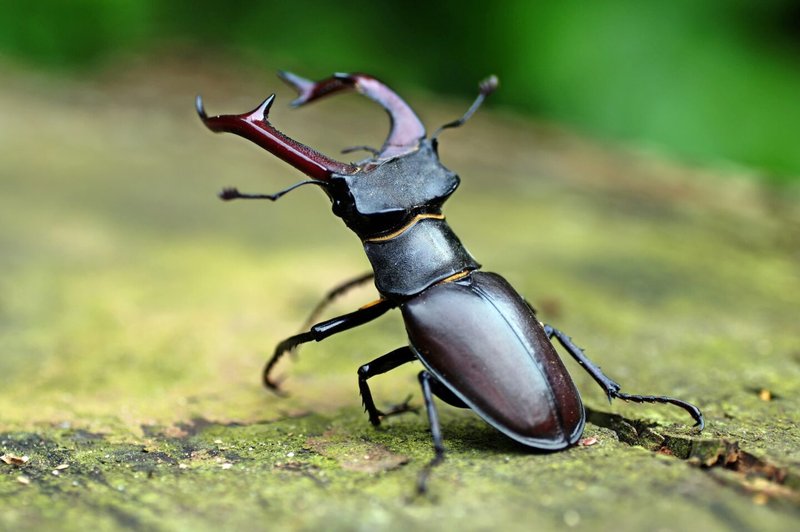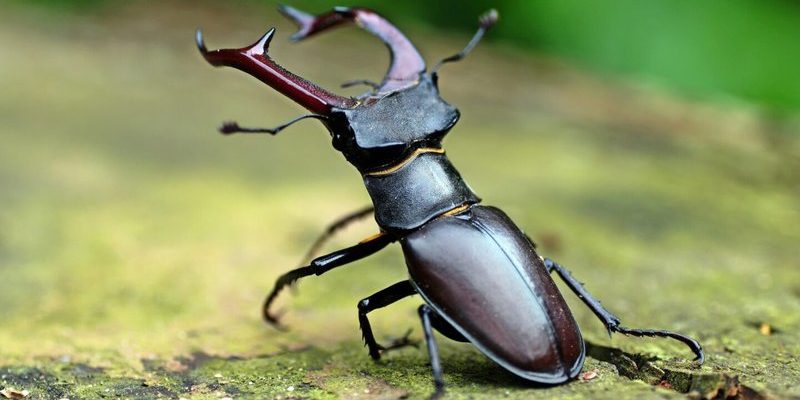
Think of stag beetles as the unsung heroes of the insect world. They may not be as famous as butterflies or ladybugs, but their stories are just as intriguing. Researching them allows scientists to uncover insights not only about the beetles themselves but also about the environments they inhabit. So, let’s dive into how scientists have approached the study of stag beetles and what this means for our understanding of nature.
Understanding Stag Beetles: Basics and Importance
Before we get into the nitty-gritty of scientific studies, let’s talk about what stag beetles are. These beetles belong to the Lucanidae family and are known for the impressive, antler-like pincers that male stag beetles sport. These pincers are not just for show; they play a crucial role in mating rituals and territorial disputes. You might wonder why these particular features matter. They help scientists understand sexual selection and evolutionary adaptations among insects.
Why study stag beetles? Here’s the thing: they serve as a natural indicator of the health of their ecosystems. Since they thrive in wooded areas, research on their populations can reveal important information about forest health and biodiversity. If stag beetles are thriving, you can bet the ecosystem is in pretty good shape. Conversely, a decline in their numbers can signal a problem, nudging scientists to investigate further.
Historical Context: Early Studies
Scientific interest in stag beetles dates back centuries. Early entomologists were fascinated by their size, diversity, and behavior. The first formal studies began in the 18th century, when naturalists like Carl Linnaeus started classifying insects. Although these initial studies were mostly observational, they laid the groundwork for future research.
As time went on, scientists began to explore various aspects of stag beetle life, from their habitats to their diets. For instance, studies in the late 19th century indicated that stag beetles primarily feed on decaying wood and plant matter. This revelation highlighted their role in nutrient recycling within forests, proving they were much more than just quirky bugs. The more researchers pursued these lines of inquiry, the clearer it became that these beetles held valuable secrets about the environments they inhabited.
Modern Research Techniques
Fast forward to today, and the techniques used to study stag beetles have evolved dramatically. Researchers now employ tools like DNA analysis and remote sensing to gather data. By extracting DNA from beetles, scientists can explore genetic diversity within populations or track how species have adapted over time.
Remote sensing, on the other hand, allows scientists to assess beetle habitats from above. Using aerial imagery and satellite data, they can identify areas rich in suitable habitats for stag beetles. This is great news for conservationists who want to protect these vital ecosystems. You might be surprised to learn just how much technology can enhance our understanding of these charming critters.
Behavioral Studies: Mating and Territory
One of the most intriguing aspects of stag beetle research focuses on their behaviors, particularly how they court and compete for mates. Observational studies have shown that males often engage in fierce battles using their impressive jaws. These battles can last several minutes and are essential for establishing dominance.
Researchers have documented various strategies that male stag beetles use to attract females. For example, some males will engage in elaborate displays, waving their pincers to show off their strength. This is not just a spectacle; it’s a vital part of the mating process. Understanding these behaviors helps scientists learn more about sexual selection and evolutionary pressures in insects.
Conservation Efforts: Protecting Stag Beetles
Given their role as indicators of forest health, stag beetles are now at the center of various conservation efforts. Scientists study population trends to develop strategies aimed at preserving their habitats. With deforestation and habitat destruction on the rise, these studies are crucial.
Organizations worldwide have launched campaigns to raise awareness about the importance of stag beetles. For instance, by creating wildlife corridors or restoring decaying woodlands, conservationists are working to ensure that these beetles can continue to thrive. You might be wondering how this impacts you—well, a healthy population of stag beetles can mean a healthier ecosystem overall, which affects us all.
Stag Beetles in Cultural Context
Stag beetles aren’t just scientific subjects; they’ve also made their mark in culture. In various societies, these creatures symbolize strength and resilience. In Japan, for example, stag beetles are kept as pets and are even featured in children’s literature. Their unique appearance and behaviors have made them a source of inspiration for art and folklore.
Exploring the cultural significance of stag beetles adds another layer to our understanding of these insects. It shows how intertwined they are with human lives, beyond just their ecological roles. You could say stag beetles are tiny ambassadors for nature, bridging the gap between science and culture.
Future Directions: What’s Next for Stag Beetle Research?
As science continues to evolve, so too does the study of stag beetles. Researchers are increasingly interested in the impacts of climate change on their populations and habitats. Rapid changes in temperature and weather patterns could have significant effects on these beetles and the ecosystems they represent.
There’s also a growing interest in the role of stag beetles in broader ecological systems. Studies focusing on their interactions with other species, including plants and fungi, are increasingly common. Understanding these relationships is key to developing effective conservation strategies and maintaining biodiversity.
To sum it up, the study of stag beetles is an exciting field that combines history, behavior, conservation, and culture. As researchers explore new questions and employ cutting-edge technologies, there’s no telling what fascinating discoveries await us.
In conclusion, stag beetles are more than just intriguing insects; they are essential threads in the fabric of our ecosystems. With ongoing research and conservation efforts, we can ensure that these remarkable creatures continue to thrive for generations to come.

